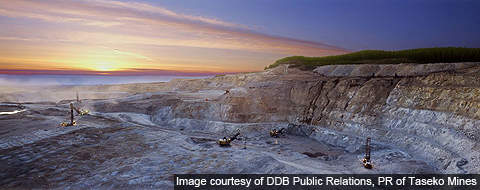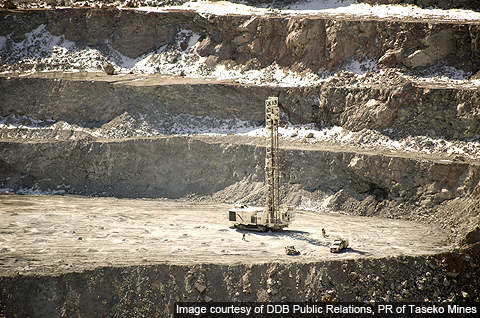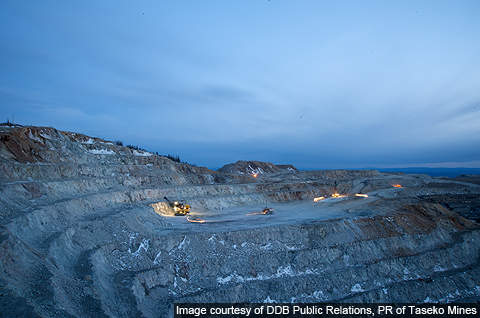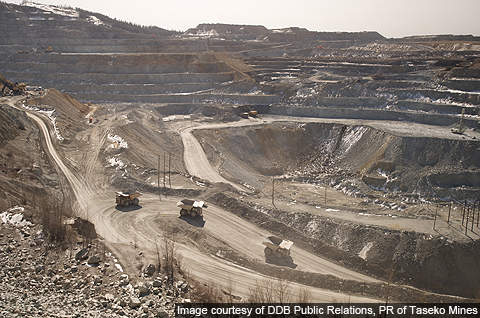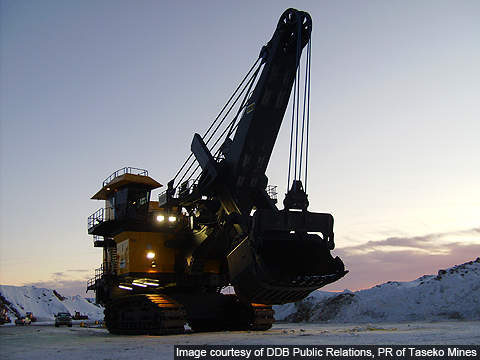The Gibraltar copper-molybdenum open-pit mine is located in British Colombia, Canada, approximately 60km north of Williams Lake. The 109km² property is the second-largest copper mine in Canada, with a daily throughput of 46,000t. It is 75% owned by Taseko Mines with the remaining held by Cariboo Copper that made the acquisition in March 2010. The mine was reopened by Taseko Mines in 2004, four years after it was acquired in 2000.
A $300m expansion to increase the mill capacity to 55,000t was completed in 2011 over two phases. The expansion allows the mine to support annual production of 115 million pounds (Mlb) of copper and 1.4Mlb of molybdenum.
A new expansion project known as Gibraltar Development Plan 3 (GDP3) was approved in February 2011 to increase the annual capacity further to 180Mlb. The first copper concentrate from the GDP3 project was produced in March 2013.
Expansion of the Gibraltar copper-molybdenum open-pit mine
Phase one of the $300m expansion was completed in 2008 at an investment of $76m. It involved installation of a new 34ft semi-autogenous grinding (SAG) mill, replacement of the original flotation recovery system and several downstream upgrades.
In the phase two, the concentrator was modified to enable the SAG mill to operate at its nameplate capacity of 55,000 tonnes per day (tpd). In addition, the tailings pumping system was upgraded and the regrind capacity was increased. Further additions made during the phase included cleaner flotation cells, pressure filter and driers and new equipment. The second phase of expansion was completed in May 2011.
The new expansion, GDP3, involved construction of a 30,000t concentrator to boost capacity and increase the annual production of the mine to 180Mlb. A key element of the expansion project is the new molybdenum recovery facility that boosts the production of molybdenum metal by more than 1Mlb/y.
The project was budgeted at $325m. The new concentrator commissioned in December 2012.
Gibraltar copper-molybdenum reserves
The mine holds 749 million tonnes (Mt) of proven and probable reserves graded at 0.256% Cu and 0.008% Mo, as of December 2014. The measured and indicated resources stand at 1,092mt graded at 0.254% Cu and 0.008% Mo.
Geology
The mine is hosted within the upper Triassic-aged granite mountain batholith located within a wedge-shaped block of Mesozoic and Palaeozoic rocks. The rocks are bordered to the west by the Fraser fault system and by the Pinchi fault system to the east. The Pinchi fault system forms the boundary between the Cache creek and the Quesnel terrane.
Ore mineralisation is associated with the later stage of local deformation and alteration. In specific zones of the batholith, copper mineralisation has been formed due to localised metasomatic alteration and related sulphide deposition that accompanied local deformation.
Copper mineralisation occurs within four major structural hosts. It includes penetrative foliation structures composed of distinct chlorite and/or sericite lamellae, oriented stockworks, shear zones composed of alteration minerals and quartz gangue composed gangue dilation veins.
Mining and processing
The deposit has been mined using open-pit techniques since 1971. The Gibraltar pits have been mined in a phased manner to support operations up to 2037. Single-stage mining was performed on the smaller south end of the extension pit, which was previously known as Gibraltar West.
Mining is carried out using standard open pit mining equipment, including three electric blast hole drills and three electric rope shovels. The mining fleet includes four 320t haul trucks, 13 240t haul trucks and five 205t haul trucks.
The sulphide ore is processed through single-stage crushing circuits involving one of the two primary crushers. Ore is sized to 6in and fed to the SAG mill. The SAG mill provides six closed-circuit ball mills with material of less than 0.5in across. At the ball mills, a nominal 350-micron product is produced that is fed to the rougher flotation.
A rougher concentrate is together produced by two parallel rougher flotation banks. The rougher concentrate is processed and upgraded through a two-stage flotation clean circuit. A bulk concentrate with both copper and molybdenum is thickened to separate the two minerals using differential flotation. The two minerals are dewatered to moisture content, following separation for transportation.
Contractors
An engineering, procurement, construction and management (EPCM) contract for the GDP3 expansion was awarded to Ausenco in May 2011.

